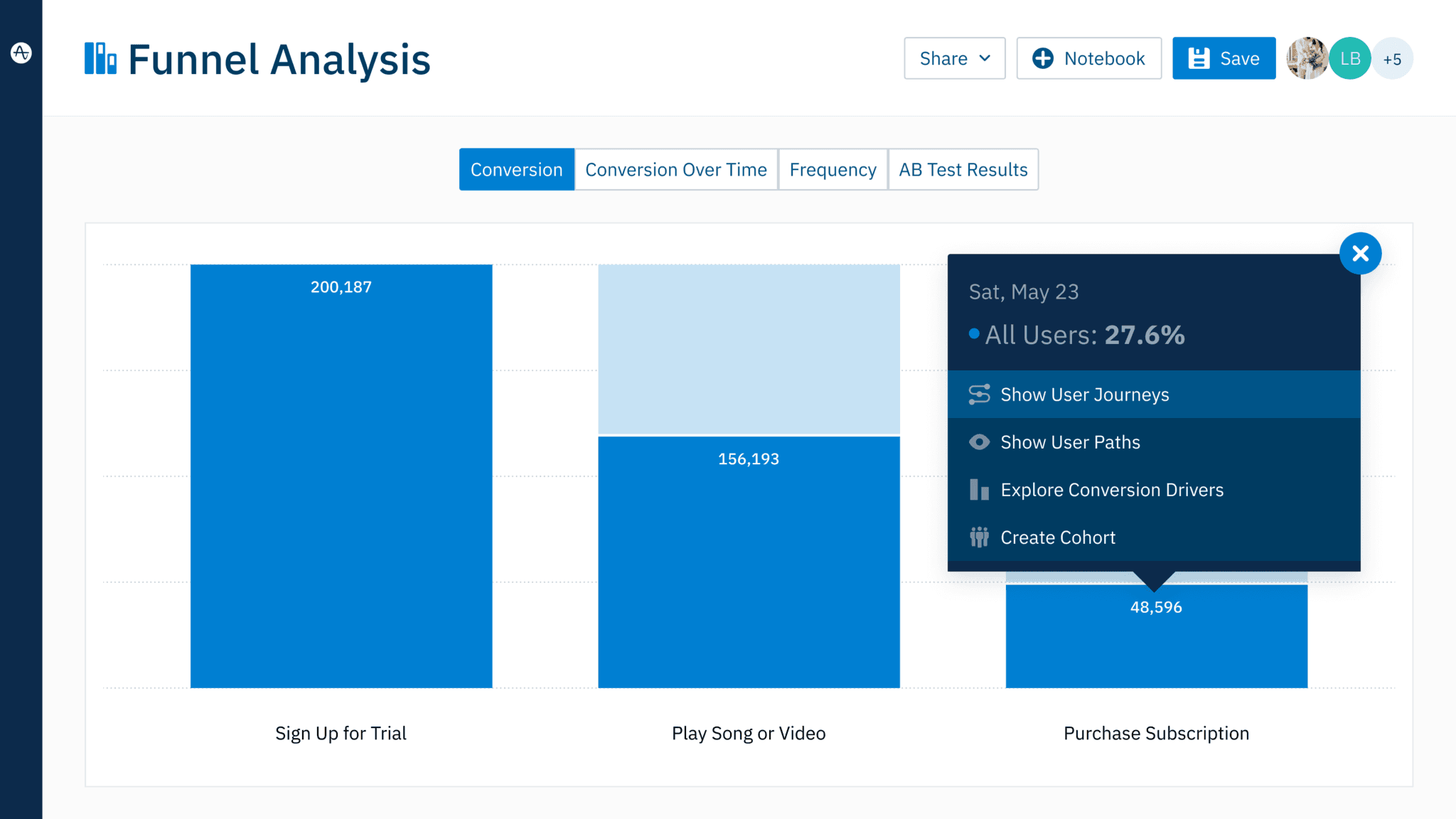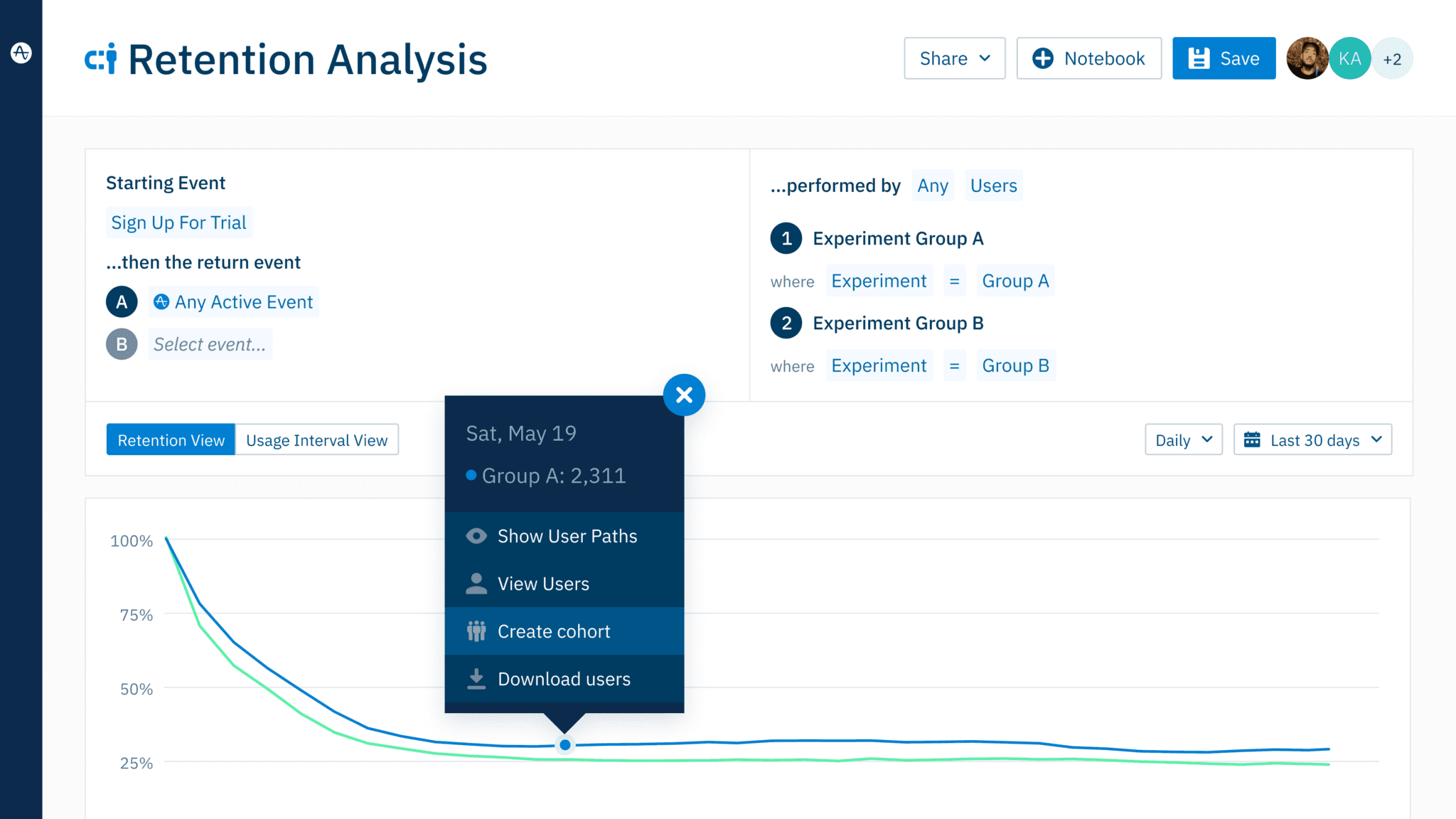Agile Product Management: Definition, Best Practices, & Examples
Discover how agile product management will help you quickly adapt to new feedback and insights—resulting in a product that customers love.
What is agile product management?
Agile product management is an approach to product development where teams iterate frequently, continuously adapt the roadmap to feedback and insights, and work in short sprints. The product strategy and vision are defined from the start, but they remain flexible to what the team learns along the way.
From conceptualization to product launch, agile teams focus on listening to what customers love and building those features.
Unlike the linear waterfall approach of product management, which defines the phases in the product development process upfront, agile product management is open to making changes based on new inputs. The team makes modifications and multiple iterations based on customer feedback and insights in each stage of the development process. This ensures the end product is consistently aligned with customer needs.
Key takeaways
- Agile product management means having a flexible approach throughout the product development process so teams can adjust to feedback and create products that align with customer needs.
- The benefits of agile product management include improved collaboration, flexibility, adaptability, customer satisfaction, unified vision, as well as quality customer experiences that align with customer needs.
- The key principles of agile product management include the following:
- Define initial product strategy
- Identify customer needs
- Build a product roadmap
- Prioritize features for implementation
- Measure product success
- Case studies from data-driven product companies such as ABA English and Calm show improved user experience and increased customer retention when using agile to act on product analytics data.
Benefits of agile product management
Let’s take a look at the advantages of agile product management:
- Improved collaboration: Agile encourages feedback loops, which bolsters collaboration between managers, developers, designers, and customers.
- Flexibility and adaptability: Since agile product management has short sprints and constant feedback, teams can easily adapt and avoid expensive or time-consuming changes.
- Customer satisfaction: In agile, you get early and frequent feedback about what’s working and what’s not, so you can deliver the product that customers need.
- Clear direction and unified vision: By building a robust and strategic roadmap, product teams will stay aligned to an overall product vision.
- Seamless customer experiences: Product managers work closely with marketing, sales, IT, and tech teams to build product experiences aligned to customer needs and reduce friction across all touchpoints in the customer journey.
Key responsibilities for product managers in agile
As a product manager or product team lead, you can use agile to accelerate:
Setting product strategy
Agile product management requires product managers to research the market, pinpoint customer needs, and identify strategic goals—while keeping in mind the organization’s objectives.
Identifying customer needs
Agile product management entails a customer-centric approach by identifying the pain points of consumers through reviews and feedback.
For example, Atlassian encourages users to submit or upvote feature requests in the platform so developers know what users need.
Building the product roadmap
An agile roadmap provides a flexible near-term plan focused on achieving the product strategy. It usually consists of short-term tactics and long-term goals.
Prioritizing features for implementation
With a release plan, you’ll be able to break down big ideas and set a realistic working timeline. For example, if you’re conceptualizing a ride-booking service, the features for implementation could include: one-tap online booking, tracking your driver via GPS, and paying in-app.
Measuring product success
Pay attention to engagement, customer retention, conversion, and other relevant metrics connected to your objectives. User experience tends to be the common theme, so include tracking of feature usage and the impact a feature or flow has on the overall product experience.
Best practices for an agile product roadmap
Treat the product roadmap as a statement of intent
An agile product roadmap is similar to a statement of intent. It’s not a set of literal deadlines and plans that you should always follow. Instead, it’s a plan that must be open to flexibility as the teams’ circumstances change.
Make the product roadmap goal-oriented
A goal-oriented product roadmap should help you remain focused on the objectives you want to achieve. For instance, the objectives could encompass increasing customer retention or growing activation and subscription rates.
Revisit your product roadmap periodically
Evaluate your product roadmap with the core team on a regular basis. This helps get everyone on the same page, especially if you have to adjust deadlines based on feedback from other stakeholders (e.g., partners and customers). How often you review your product roadmap may vary based on your market and the maturity of your product.
Real-world examples of agile product management
ABA English increases activation and subscription
ABA English is an online language academy and a leading platform for English learning methods. Inspired by agile product management, Chief Operating Officer Gino Micacchi created a product roadmap, focused on specific objectives and key results (OKRs) connected to a main objective: increasing lifetime value through better customer retention.
The team analyzed the first-week experience of their students. For key results, they looked at the 7-day retention and 7-day conversion to a premium subscription, using behavioral cohorts in Amplitude. The team found out that new users chose the wrong course level which led them to abandon the course and the platform.
Gino’s team stayed agile and adapted to the feedback from product analytics:
- They shifted the focus to prompting users to finish their first course.
- They launched a Level Test, so students could identify their course level and determine where they should begin.
The product management style and the ensuing product development resulted in the activation rate increasing by 2x and subscriptions on mobile increasing by 4.5x.

The Amplitude Funnel Analysis chart shows how users drop off while using a music app.
Calm increases user retention
The Calm app had a “Daily Reminder” feature that allowed users to set a reminder for their daily meditation session, but less than 1% of users discovered it.
The product team used Amplitude’s behavioral cohorting capabilities to compare the retention of users that used daily reminders vs those who did not. Results revealed there was a 3x boost in retention among users who frequently used Daily Reminders.
In their agile response to the behavioral data, they displayed a prompt that encouraged new users to set daily reminders after finishing their first mediation session.
40% of the users who saw the prompt went on to set a daily reminder, and the retention increased by 3x.

Amplitude retention curve—an example of user behavior data that you can adopt your sprints to.
Tips for adopting agile product management methodology
Shifting to an agile product management framework after using a linear method such as waterfall may seem intimidating. Below are our top tips to make it easier for you to adapt agile product management to your team’s processes.
Tip 1: Combine agile with other methods that suit your needs
Agile works best when combined with other methods that have proven to work with your organization. ABA English CEO Gino Micacchi created a framework that combined agile with the risk management and time-control of Stage-Gate (which was inspired by waterfall), and also lean. This made it so that they could use agile while still feeling familiar with processes during the changes.
Tip 2: Empower your team by leading the iterative decision making
Agile demands a flexible structure because different stakeholders must decide fast and frequently based on the results of each iteration. As a product manager, your role is to consider the opinions of all parties involved (e.g. end-users, investors, team members), then be the person to lead the decision-making.
Decision-making really is at the core of a product manager’s responsibilities. Making decisions that are clearly based on feedback and vision will help align your team before moving on to the next stage. This will give your team confidence and help them work well.
Tip 3: Develop a roadmap and justify initial plans
Agile product managers must create a roadmap or strategy from conceptualization to product launch. Although this may differ based on your product or industry, the product development process follows a general process:
- Concept (“If our hypothesis were true, would we have a scalable business?”): Provide financials to assess whether the business idea is viable.
- Prototype (“Show me the evidence”): Create a prototype and evaluate whether your solution solves the problem you want to address.
- MVP (“Show me results”): Build a minimum viable product (MVP) and define your KPIs and success metrics.
- ROI (“Show me the money”): Focus on marketing and funnel optimization to sell the product and generate revenue.
- Growth (“Make money”): Allocate resources permanently and start to envision consolidation and expansion.
Strategy 4: Start small and achieve early successes
It’s best to start the transition with smaller teams or smaller objectives first. This helps keep costs down, especially at the concept or prototype stage where the team is likely working with a small investment. But even with large projects, starting small is the perfect way to ease your team into the agile style of product management.
Avoiding common mistakes in agile product management
It’s easy to get started with agile and be discouraged from small mishaps along the way. Here are three big mistakes, and how to avoid them.
Working on assumptions
When you’re building or improving a product, there’s a tendency to make a lot of assumptions. How do you identify the riskiest assumptions?
Keep in mind the iterative process and give yourself the flexibility to try things. The more you apply agile, the more natural it will be for you to only count on something after the user behavior data has confirmed it. It’ll become natural to get early and frequent feedback which you can use to adjust your plans.
Adopting agile sprints without adopting feedback loops
Teams may get too stuck in agile product management processes and sub-processes. They think about the steps in Kanban or agile product management with scrum methodology. Or, they argue whether the agile product development life cycles are short enough. Eventually, they break down their work into two-week sprint cycles—and they think that is all it takes to be agile.
But those teams may fail to collect insights from customers and respond to them. Just working in sprints does not mean you’re receptive to what the users want, or that you’re improving user experience. Remember to not skip that part.
Adopting short sprints without shipping frequently
Imagine a team that has transitioned from waterfall. Now they work in two-week sprints, or four-week sprints when working on a bigger effort. That’s a sign of agile. But what we’ve seen happen is that the team did not actually ship anything after the sprint. Sometimes, six months can go by and the team still hasn’t shipped anything.
The sprints need a clear outcome and benefit to the users. Shipping frequently, at the end of each sprint, is what enables you to get insights from customers, and continue iterating frequently. Be sure not to fall into the trap of becoming a feature factory, though. Shipping is important, but make sure you’re also shipping what matters.
Additional resources
- What is agile product management?, Aha.io
- Product Management Is Key to Digital Business Success, Gartner
- Essential Product Management Practices to Monetize Data and Analytics Assets, Gartner
- A modern approach to Stage-Gate: Innovation and risk management for Scale-ups, Medium
- How ABA English used Amplitude to increase conversion and grew their mobile revenue, Amplitude
- How Calm Increased Retention 3X After Switching to Amplitude, Amplitude
Read the North Star Playbook to learn more about setting product goals that bring about real customer value and business value.

Hiral Shah
Former Director of Product Management, Amplitude
Hiral is a former product leader at Amplitude, driving our strategy to manage data at scale within Amplitude and our partner ecosystem. A graduate from Carnegie Mellon and Stanford GSB, she is passionate about working at the intersection of business and technology. Having worked on first generation Apple products and investing in startups as a VC, she loves to be the voice of customers while defining strategy.
More from Hiral





